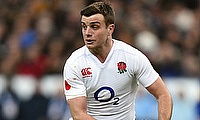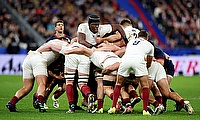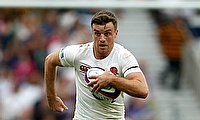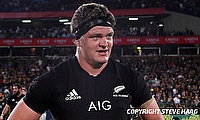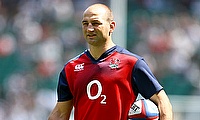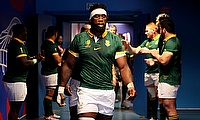Half-Backs hindering England's progress
It’s already clear from the three performances under Eddie Jones that England are a side that’s progressing and learning once again how to win ugly in test rugby.
The pack is beginning to click at the set-piece, the power carriers are hard to contain and their defence is as formidable as it was at any time under Stuart Lancaster. Jones is playing to the strengths of English rugby and it’s working out for him.
The Australian has been candid about returning England’s edge and making them as unlikeable to play as any team in the world and then, from that foundation of strength, looking to add extra dimensions to the way in which they operate.
In all honesty, given that England are only three games into his tenure, the progress is impressive.
One stark negative that does stand out, however, is the half-backs, with the current combination seemingly putting a self-imposed ceiling on how good England can be for the foreseeable future.
Ben Youngs and George Ford are both very talented players but as a combination, and in current form, are unable to provide the urgency with which England need to thrive. Jonathan Joseph, Anthony Watson and Jack Nowell have proven their threat, but are not being put in the best possible position to succeed.
Both Youngs and Ford like to take a step once they have possession of the ball.
Youngs’ ability to make sniping runs often see him take two or three steps before passing, testing and daring the opposition defence to give him a gap. Likewise, Ford is prone to drifting laterally before shipping the ball on.
These movements can create running opportunities for the half-backs but if no gap opens up in the defence, it leaves the outside backs with less space to work in, as well as less time to make ground before the defensive line gets to them.
If Youngs were dovetailing with Owen Farrell at fly-half, who is currently playing as sharply and crisply as he ever has, it would be much less of an issue. Similarly, if Danny Care were providing swift service to Ford, the latter’s lateral movements would be less detrimental to the back line.
If Ford were on top form and playing as instinctively as he did with Bath last season, it may be a combination (with Youngs) that would work, but as of right now, it’s a partnership that looks laboured and prohibitive.
The decision to start Ford at fly-half with Farrell pushed out to inside centre has baffled many, with Farrell certainly the form fly-half in the Aviva Premiership, and whilst it cannot be criticised too strongly given that England are on-track for their first Grand Slam since 2003, it is yet to click.
If the selection is designed to acclimatise England to the dynamic of two playmakers, with Henry Slade set to become involved once he recovers from his broken leg, then it is certainly understandable, and speaks to short-term sacrifice in order for long-term gain.
That said, it’s a 9-10-12 combination that seems to be the Achilles’ heel in an otherwise quickly-improving England side.
Jones’ selection decisions for the upcoming game against Wales will be particularly intriguing. Does he stick with what has struggled to click but won games so far in Youngs-Ford-Farrell? Or does he mix it up?
Moving Farrell inside to 10 would be a popular move and would potentially get the best out of Youngs, whilst Care’s snappy service would help Ford operate, allowing Farrell to stay at 12, where, in fairness, he has done a very solid job. The fitness of Manu Tuilagi could well play a large role Jones’ decision-making.
England have improved 1-8 and 11-15 so far this Six Nations, with many players already cementing themselves into Jones’ plans for the summer in Australia. The half-backs haven’t made a similar statement just yet and it will be worth keeping an eye on how they go against Wales at Twickenham.


